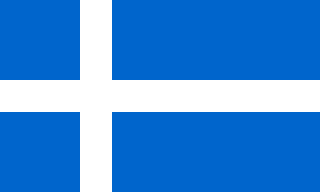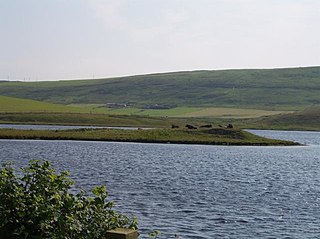External links
This article incorporates text from the article The_New_Shetlander on Shetlopedia, which was licensed under the GNU Free Documentation Licence until September 14, 2007.
The New Shetlander is Scotland's longest-running literary magazine, founded in 1947, and edited originally by Peter Jamieson. Its title and to some extent its content were modeled on the socialist journal The Shetlander, published in the early twenties.Following financial difficulties, since 1956 it has been published by the Shetland Council of Social Service and its successor Voluntary Action Shetland. It has had a central role in Shetland's Literature since it was founded. For the greater part of its existence thus far, 1956 till 1998, the New Shetlander benefited from the editorial care of the brothers John J. Graham and Laurence I. Graham. In 1998 Alex Cluness and John Hunter took on the task of following that sterling team. In 2002 the historian Brian Smith and the author Laureen Johnson became editors.
The New Shetlander now appears three times a year, price £3.50. In 2007 it celebrated its 60th anniversary by publishing issue number 239. A redesign and relaunch took place with issue 294 in 2021.
The archive is a treasure trove of varied material, reflecting the many changes Shetland has gone through since World War II.
The New Shetlander′s office is located at Market House, Market Street, Lerwick, Shetland.
This article incorporates text from the article The_New_Shetlander on Shetlopedia, which was licensed under the GNU Free Documentation Licence until September 14, 2007.

Shetland, also called the Shetland Islands and formerly Zetland, is an archipelago in Scotland lying between Orkney, the Faroe Islands, and Norway. It is the northernmost region of the United Kingdom.
A trow is a malignant or mischievous fairy or spirit in the folkloric traditions of the Orkney and Shetland islands. Trows may be regarded as monstrous giants at times, or quite the opposite, short-statured fairies dressed in grey.

The Northern Isles are a pair of archipelagos off the north coast of mainland Scotland, comprising Orkney and Shetland. They are part of Scotland, as are the Hebrides. The climate is cool and temperate and much influenced by the surrounding seas. There are a total of 36 inhabited islands. The landscapes of the fertile agricultural islands of Orkney contrast with the more rugged Shetland islands to the north, where the economy is more dependent on fishing and on the oil wealth of the surrounding seas. Both island groups have a developing renewable energy industry. Both have a Pictish and Norse history. Both were part of the Kingdom of Norway until they were absorbed into the Kingdom of Scotland in the 15th century. They remained part of it until the 1707 formation of the Kingdom of Great Britain and the 1801 formation of the United Kingdom. They both played a significant naval role during the world wars of the 20th century.

The flag of Shetland is a white or silver Nordic cross on a blue background. The flag uses the colours of the flag of Scotland, but in the form of the Nordic cross in order to symbolise Shetland's historical and cultural ties with Scandinavia. The official recommended colour of the flag of Scotland is Pantone 300, which implies that this would be appropriate for the Shetland flag too, though the Flag Institute lists the colour as a similar Pantone 286. It was created by Roy Grønneberg and Bill Adams in 1969, to commemorate the 500th anniversary of the transfer of the islands from Norway in the Kalmar Union to Scotland and the 500 years before as part of Norway.

The Shetland, known natively in the Scots language as Shetland kye is a small, hardy Scottish breed of cattle from the Shetland Islands to the north of mainland Scotland. The cattle are normally black and white in colour but there are smaller numbers in grey, red and dun.
Raman Mundair is a British poet, writer, artist and playwright. She was born in Ludhiana, India and moved to live in the UK at the age of five. She is the author of two volumes of poetry, A Choreographer's Cartography and Lovers, Liars, Conjurers and Thieves – both published by Peepal Tree Press – and The Algebra of Freedom published by Aurora Metro Press. She edited Incoming – Some Shetland Voices – published by Shetland Heritage Publications. Mundair was educated at the School of Oriental and African Studies, University of London, and has performed readings of her work at numerous venues Raman's work has been anthologised and received reviews in publications including The Independent, The Herald, World Literature Today and Discovering Scottish.
Vagaland, was a Scottish poet from Shetland.
Shetland literature is literature written in Shetland, Scotland, or by writers from Shetland. The literature is often written in Shetland dialect or its parent language, Norn, and often depicts the history and folklore of Shetland. Common themes include reflections on island life and proximity to the sea, it is fishing and crofting traditions, the weather and seasons as determined by Shetland's climate, Shetland's unique landscape, its flora and fauna, and the influence of the people's Viking heritage. Folklore often displays features seen similarly in Scandinavia and some Celtic traditions.
James John (J.J.) Haldane Burgess was a Shetland historian, poet, novelist, violinist, linguist and socialist, a noted figure in Shetland's cultural history. His published works include Rasmie's Büddie, Some Shetland Folk, Tang, The Treasure of Don Andreas, Rasmie's Kit, Rasmie's Smaa Murr, and The Viking Path, the latter being translated into German. He was one of the Shetlanders who gave assistance to Jakob Jakobsen, in his researches into the Norn language in Shetland.
Rhoda Bulter, Shetland author, is one of the best-known Shetland poets of recent times.
James Stout Angus was a writer from Shetland, Scotland.
Laurence I. "Lollie" Graham (1924–2008) was a Scottish poet and author
The Shetland Fiddlers' Society is a group of fiddlers from Shetland that play regularly for Shetland Folk Dance and perform at events such as Shetland's Folk Festival and Accordion and Fiddle Festival.

Law Ting Holm is a small promontory at the north end of the freshwater Loch of Tingwall, Mainland Shetland, Scotland. It was once an islet entirely surrounded by water, joined to the shore by a stone causeway 1.7 metres (6 ft) wide and 42.7 metres (140 ft) long. In the 1850s the levels of the loch were lowered and the holm evolved to its present form. The Loch of Tingwall is west of the town of Lerwick and has one additional island - Holm of Setter.
The History of Shetland concerns the subarctic archipelago of Shetland in Scotland. The early history of the islands is dominated by the influence of the Vikings. From the 14th century, it was incorporated into the Kingdom of Scotland, and later into the United Kingdom.

Scandinavian Scotland was the period from the 8th to the 15th centuries during which Vikings and Norse settlers, mainly Norwegians and to a lesser extent other Scandinavians, and their descendants colonised parts of what is now the periphery of modern Scotland. Viking influence in the area commenced in the late 8th century, and hostility between the Scandinavian earls of Orkney and the emerging thalassocracy of the Kingdom of the Isles, the rulers of Ireland, Dál Riata and Alba, and intervention by the crown of Norway were recurring themes.
Stella Sutherland was one of the Shetland writers of the later 20th and early 21st century. Best known for poetry in both English and Shetland dialect, she also contributed articles and short stories to local magazines, especially The New Shetlander.
Robert Cowie (1842–1874) was a British physician and author.

James Robertson of Gossabrough FRS (1753–1829) was an 18th-century Scottish surveyor and map-maker.

The Battle of Ronas Voe was a naval engagement between the English Royal Navy and the Dutch East India ship Wapen van Rotterdam on 14 March 1674 in Ronas Voe, Shetland as part of the Third Anglo-Dutch War. Having occurred 23 days after the signing of the Treaty of Westminster, it is likely to have been the final battle of the Third Anglo-Dutch War.